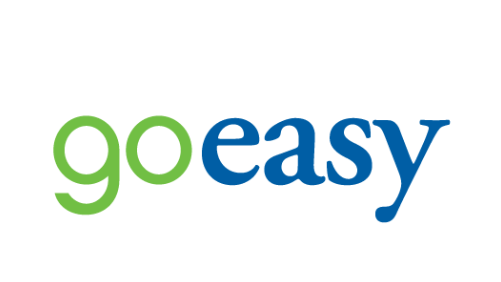Abstract: Gary Schwartz interviewed Jason Mullins, CEO of goeasy, reflecting on his 14 years of leadership and the evolving lending landscape. Mullins emphasized the importance of viewing lending as a journey, where non-prime borrowers transition to prime credit. He shared that over 60% of goeasy’s customers graduate to prime lending within three years, showcasing the positive impact of responsible lending on financial literacy and credit improvement. Mullins discussed regulatory challenges, cautioning that lower APR caps could limit credit access for fringe borrowers, pushing them toward less desirable alternatives. On leadership, Mullins highlighted the significance of intentional corporate culture and the balance between leveraging AI and preserving human interaction in lending. He advised new CEOs to prioritize networking and benchmarking early, sharing how these practices strengthened goeasy’s strategies. As Mullins transitions to a new role in U.S. small business lending, he remains committed to the Canadian financial sector through board roles, reflecting on a fulfilling career while looking forward to fresh opportunities.
Check out the full VIDEO here 👀
Gary Schwartz: Let’s dive right in. I want to touch on the industry first, then hear your thoughts on leadership after your remarkable 14 years at goeasy. Let’s start with the industry. As you know, I’m a strong advocate of contiguous lending. I view lending as a journey for borrowers—from non-prime to prime—rather than as isolated categories.
What role do non-prime lenders play in this borrower journey?
Jason Mullins: That’s a great question, Gary. I think it’s unfortunate that we so often distinguish between prime and non-prime lending. Ultimately, we’re all serving Canadians with varying credit profiles, and lending is priced based on risk. What really matters is helping all borrowers achieve their goals—whether it’s homeownership, financial stability, or personal aspirations.
At goeasy, we’ve even shifted how we talk about our customers. We no longer refer to them as “non-prime Canadians.” Instead, we say they’re Canadians with non-prime credit scores. These individuals have the same dreams and aspirations as prime borrowers. By fostering a free market, we create competition and innovation, which drives better and more accessible products for borrowers. Over time, this approach benefits consumers by improving access and lowering costs.
How does goeasy help borrowers improve their credit and graduate to prime lending?
Jason Mullins: Our data shows that our approach is working. Within the first year of borrowing, a third of our customers have improved their credit scores enough to access prime lending. By the second year, that figure rises to over 50%, and by the third year, more than 60% of our borrowers have transitioned to prime credit.
This demonstrates that the majority of Canadians using non-prime products do so responsibly. These products help rebuild credit, improve financial literacy, and ultimately support borrowers in achieving their financial goals.
Gary Schwartz: Let’s discuss the regulatory landscape. With the upcoming APR cap of 35% and discussions about embedding insurance into that calculation …
What impact do you think the APR cap will have on borrowers and the lending industry?
Jason Mullins: Lending is fundamentally priced based on risk. As regulations lower the maximum allowable rate, fewer borrowers—especially those on the fringe—will qualify for mainstream, regulated credit.
When you limit access, you push borrowers toward less desirable options, like high-cost payday loans or even illegal lending. While lower APR caps might benefit some, they exclude others from access altogether. This is why we advocate for policies that balance affordability with access to credit. You can’t have both simultaneously without consequences, and it’s crucial to consider those trade-offs.
With a federal election looming, how do you think the political landscape will affect this conversation?
Jason Mullins: A Conservative government is likely to lean toward a free-market approach and may question whether APR caps effectively address affordability issues. On the other hand, another Liberal term could mean further tightening of financial regulations, which could stifle innovation, reduce competition, and make it harder for new entrants to thrive.
While regulation is important, overregulation can create unintended consequences. We need thoughtful planning and consideration for the long-term impacts on consumers and the industry as a whole.
Gary Schwartz: Let’s shift gears to leadership. I remember a moment in Ottawa when we had just met with Andrew Bevan. You were heading out to visit your stores in the area. That speaks to your focus on corporate culture.
Can you share how culture impacts business performance?
Jason Mullins: Corporate culture is absolutely critical. At goeasy, we took an intentional approach, treating culture as a cross-enterprise project. It’s not just about perks or benefits—it’s about how we work, make decisions, and engage employees in meaningful, challenging ways.
When you invest in building a strong, intentional culture, it drives better performance. It becomes a competitive differentiator that sets you apart.
Gary Schwartz: Technology, especially AI, is reshaping every industry …
How do you balance leveraging technology with maintaining a human touch in lending?
Jason Mullins: AI and tools like natural language processing have transformed decision-making and efficiency in lending. While technology improves scalability and sophistication, there are still critical moments where human interaction matters.
For many of our customers, especially those rebuilding credit, personalized guidance is invaluable. Sitting down for a one-on-one conversation can make all the difference in helping someone navigate their financial journey. The challenge is finding the right balance—leveraging technology where it adds value while preserving the human touch in moments that matter most.
Gary Schwartz: You’ve been with goeasy for 14 years …
Looking back, what advice would you give to yourself on your first day as CEO?
Jason Mullins: I’d tell myself to start networking and benchmarking sooner. It took me too long to realize that you can learn so much by connecting with peers—even competitors—and sharing insights. Most people are willing to open up and share their experiences.
Eventually, we began purposeful benchmarking trips, visiting companies across North America. It was incredibly valuable. If I could go back, I’d prioritize that learning and collaboration from day one.
What’s next for you?
Jason Mullins: I’m stepping into a new role in small business lending in the U.S., shifting from consumer to small business and from a public to a private company. It’s an exciting challenge, but I’ll remain involved in the Canadian consumer finance space as a member of the CLA board and goeasy’s board.
Gary Schwartz: Thank you, Jason, for sharing your insights. We wish you the best in your next chapter!
Jason Mullins: Thank you, Gary! It’s been an incredible journey, and I look forward to staying connected with the community.
👉 Check out the full video here. 👀
Sign up for our 2025 Summit Series




